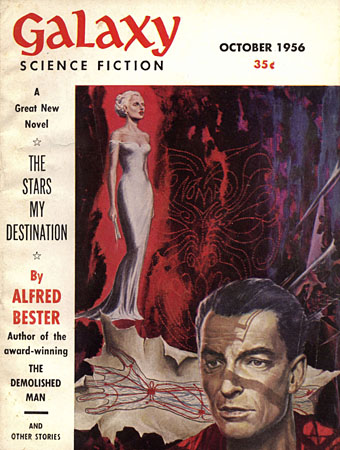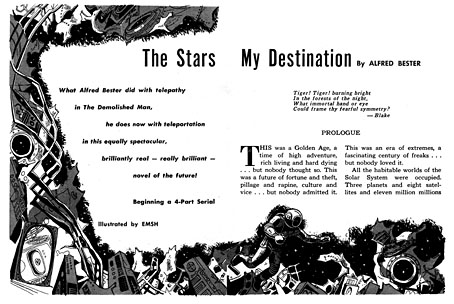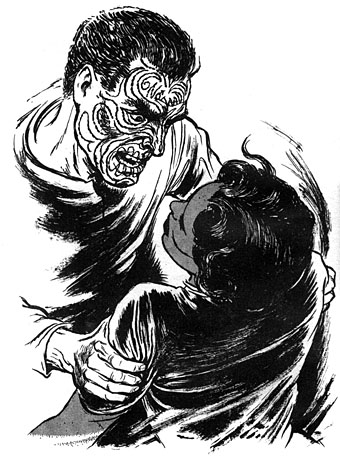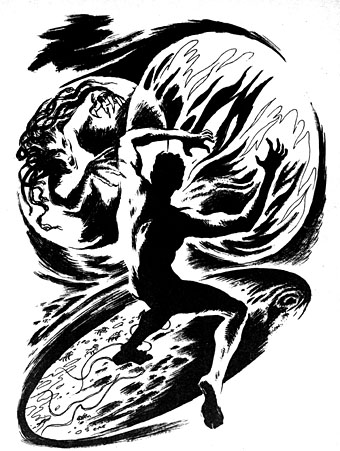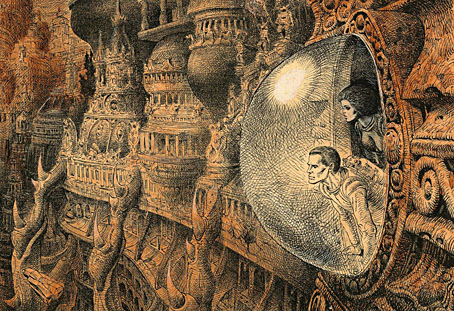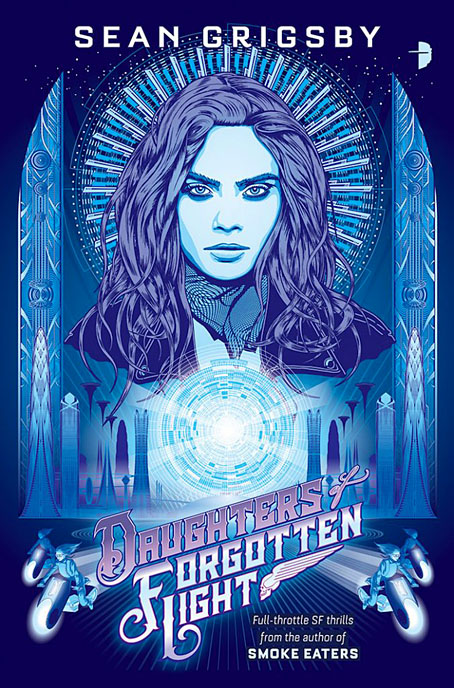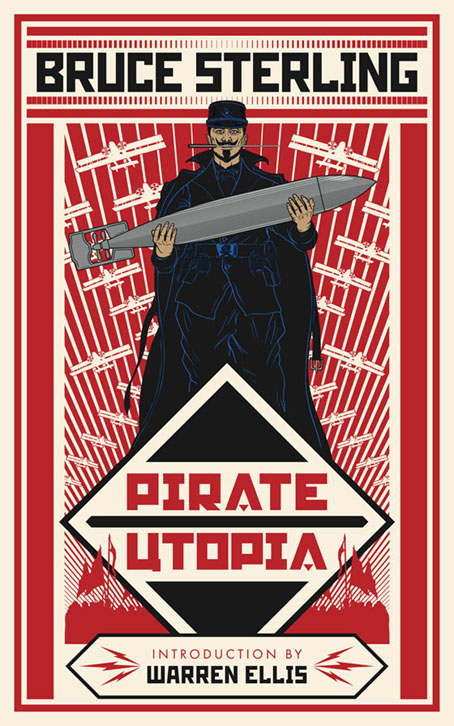Having finished reading The Count of Monte Cristo I thought I’d, er jaunt from the 1840s into the far future by revisiting Alfred Bester’s Dumas-derived The Stars My Destination. I prefer the alternate title to Bester’s novel, Tiger! Tiger!, but Stars… is the one that’s more commonly used, with the unfortunate side-effect of making the book sound like a typical space opera of the 1950s. The story may begin in space but most of it takes place on Earth in the 24th century. Bester borrows the revenge theme and a couple of other details from The Count of Monte Cristo but wisely resists any attempt to imitate the labyrinthine plotting of the Dumas novel.
Before publication in book form, the story was serialised in four parts in Galaxy magazine, from October 1956 to January 1957; Ed “Emsh” Emshwiller illustrated each instalment as well as the cover of the debut issue. I’ve said before that one of the great benefits of being able to browse old magazines online is having the opportunity to turn up neglected illustrations like these. Bester’s novel has long been regarded as a genre classic—Michael Moorcock and William Gibson both refer to it as a favourite—but its print editions haven’t generated many memorable covers. Here we have Emshwiller illustrating the entire story, and doing an excellent job, yet his drawings have been buried for years.
For the purposes of this post I’ve removed the text surrounding some of the illustrations in order to highlight the drawings. The original printings, plus the full text of the serialised story, may be found at the links below:
• Galaxy, October 1956
• Galaxy, November 1956
• Galaxy, December 1956
• Galaxy, January 1957

